The Hammer
Simon de Pury on the Rising Costs of the Venice Biennale
The veteran auctioneer shares his financial trials and QR tribulations at the exalted art exhibition.
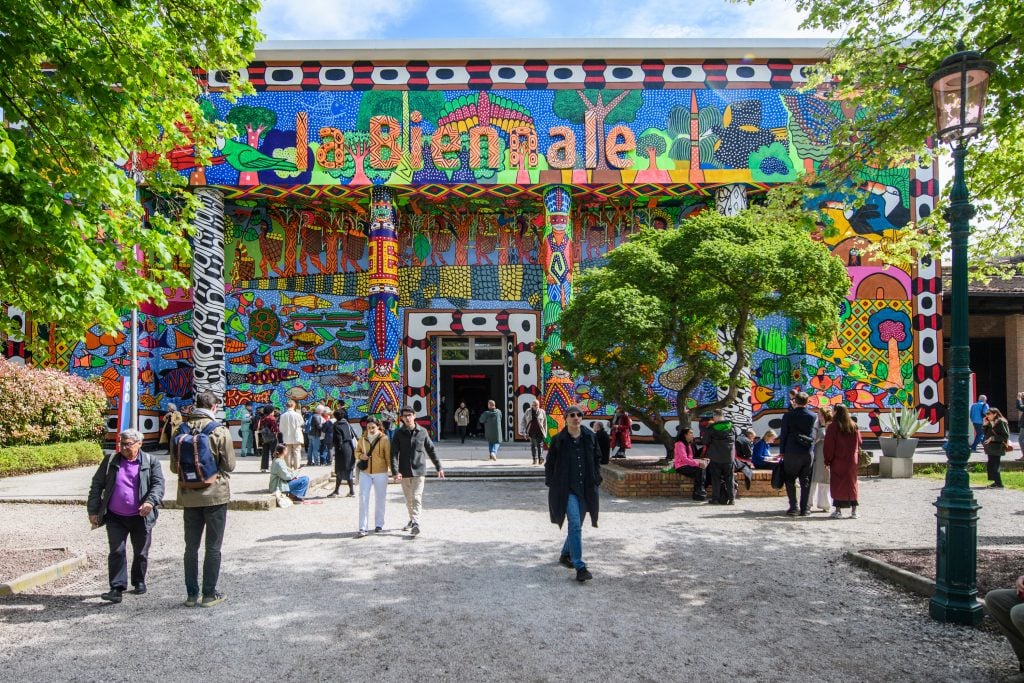
The veteran auctioneer shares his financial trials and QR tribulations at the exalted art exhibition.

Simon de Pury

Every month in The Hammer, art-industry veteran Simon de Pury lifts the curtain on his life as the ultimate art-world insider, his brushes with celebrity, and his invaluable insight into the inner workings of the art market.
I have just returned from Venice where I attended the opening week of “Stranieri Ovunque – Foreigners Everywhere,” the Art Biennale’s 60th edition that was organized by the Brazilian curator Adriano Pedrosa.
While I am fast approaching a biblical age I can sadly not boast of having visited every single past edition. As a native of Basel, I do however regularly show off having attended all 52 iterations of Art Basel in my city of birth.
Post Venice, my bank account is seriously depleted. Since the end of Covid, hotels and restaurants in popular destinations keep happily augmenting their prices as if there was no tomorrow. Why should they not, since people continue to pay for them? The average price for a room was €4,000 per night. You are forced to book for five nights— you can do the maths. I heard of room prices way in excess having been paid by some collectors. The only ones having resisted or refused outright to pay some of these insane prices are understandably people that are considerably better off financially. If you add the price of booking a water taxi around the clock, since none are ever available when you need them, a full week can seriously set you back.
As a compensation, my step account is doing better than ever. I am obsessively checking the health app in my iPhone to make sure I approach my 10,000 steps a day. Running non-stop from pavilion to pavilion, from opening to opening, and getting lost in between does wonders do boost one’s daily averages.
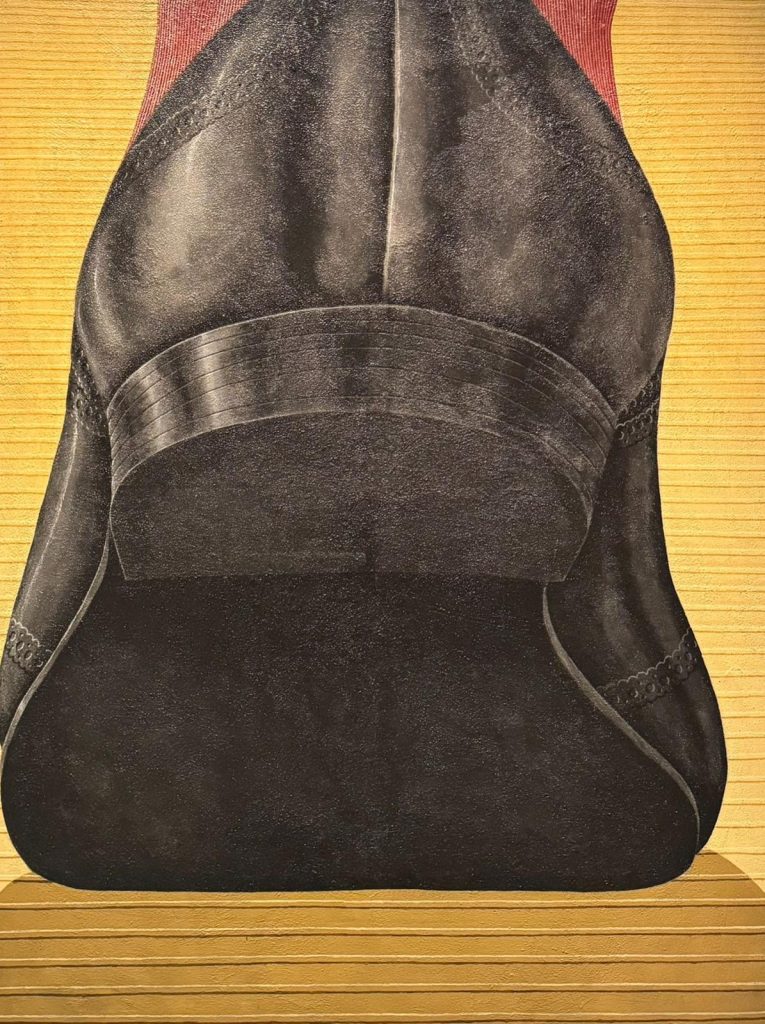
An outstanding 1967 work by the Italian artist Domenico Gnoli belonging to the Fondazione Prada, on view at the Arsenale.
As an auctioneer I always fantasize about conducting an auction selling rooms at the Gritti, Aman or the Hotel Cipriani during the Biennale opening week or at the Trois Rois during Art Basel. It was, I believe, in 2007 that a dear friend, Robert Tomei, told me that he wasn’t going to be able to use the suite he had booked for the opening week at the Hotel Cipriani. He asked me to sell it at auction and to donate the proceeds to the Guggenheim. So before the start of the May evening sale of contemporary art at Phillips de Pury in New York, I told the audience: “In case any of you are still looking for a room during the opening week of the Venice Biennale now is your chance!” Feverish bidding ensued and a Russian collector ended up being the generous highest bidder paying what I seem to remember was a price around $150,000.
The opening week of the Venice Biennale is in fact meant to be a private preview for VIPs from all over the world. I very proudly displayed at the entrance of the Giardini the preview QR code on my phone only to be told that my ticket was only going to be valid from the next day onward. This meant that I had to go to complain at various ticket counters, VIP and press desks all without any success whatsoever. Carlotta Dennis-Lovaglio, the very able senior account director at Scott & Co, the art PR company, who was already inside the exhibition, very kindly WhatsApped me her QR code.
By observing the four queues at the entrance, I saw that at three of them they were checking one’s ID. That would not have worked for me as I would have had to explain that not only had I just undergone a change of gender but also a very successful rejuvenation program. Luckily I noticed that at the fourth queue they were not asking for IDs. So after a fair amount of aggravation, I finally made it into the holy grounds of the Biennale.
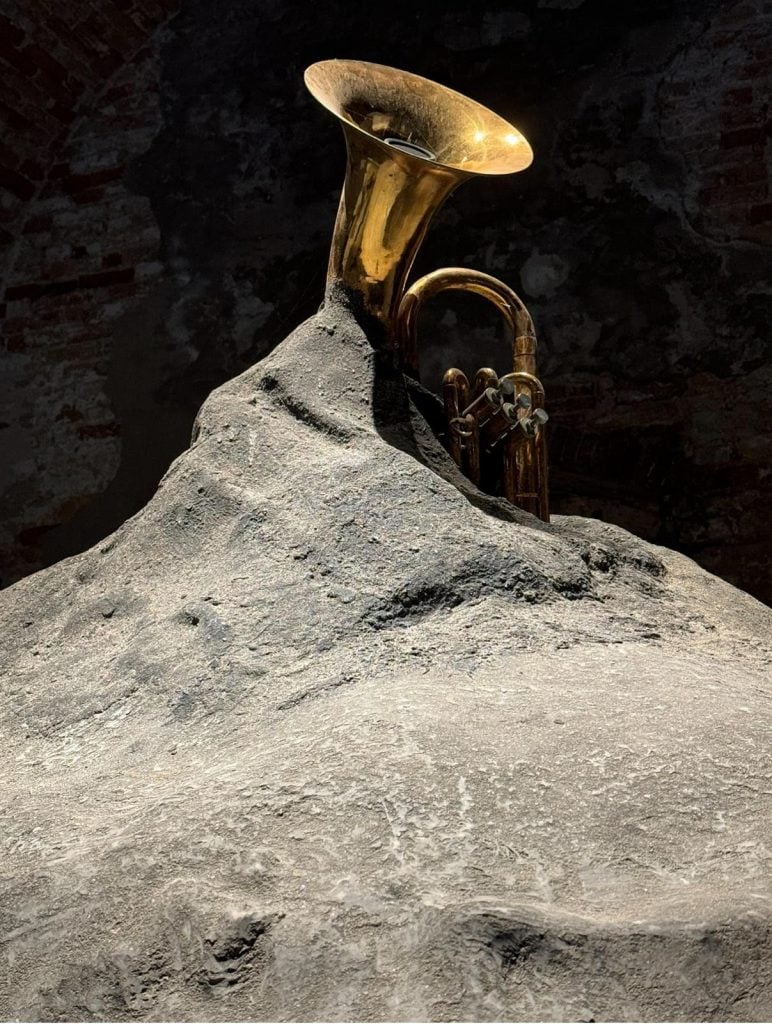
Mark Salvatus, Sa kabila ng tabing lamang sa panahong ito / Waiting just behind the curtain of this age (detail, 2024), installation view, Philippines Pavilion at the 60th Venice Biennale. Photo: Simon de Pury.
One could hear a lot of noise coming from protesters who were shouting and screaming outside some of the pavilions. I always regarded art as being one of the few areas that brought people of different backgrounds, nationalities, religions, ideologies, and skin colors together. In times of strong polarization and a lack of tolerance for differing opinions, it is not totally surprising that some of that dissonance would also be felt inside of art exhibitions, museums and art auctions. The protesters were clearly better organized than me since none of them seem to have encountered the same difficulties getting the correct QR codes for the VIP opening.
The first person I bumped into once I had finally overcome all the obstacles was Jean-Hubert Martin the brilliant French art historian who was the first curator of contemporary art at the Centre Pompidou prior to being director of the Kunsthalle Bern and the director of the Musée National d’Art Moderne in Paris. His seminal 1989 exhibition “Les Magiciens de la Terre” held at the Centre Pompidou and at La Grande Halle de la Villette can perhaps be seen as the prototype for the current Venice Biennale. It included works by 100 artists from all over the globe and was the first contemporary art exhibition in a major institution that was resolutely not west centric.
Jean-Hubert Martin had asked André Magnin to put together the section devoted to African contemporary art. Jean Pigozzi, who to this day has never travelled to Africa, was so impressed by the show that he asked Magnin to help him put together the largest private collection in the world devoted to the topic. He has since made a major donation of part of it to the MoMA in New York.
In my March column of “The Hammer,” I spoke of Malick Sidibé the first African artist and photographer to be awarded the Golden Lion of the Venice Biennale. Sidibé is extremely well represented in the Pigozzi Collection. During my several trips to Mali in the 1990s I realized in the best possible conditions what it could mean to be a foreigner in a different land. In what was then the fourth poorest country in the world everyone opened their homes to make the foreigners feel welcome and at home. Each time when I landed back in Geneva, where I was living at the time, I tried to imagine how I would feel as a Malian who had just arrived there. These first impressions would have been so dreary and depressing!
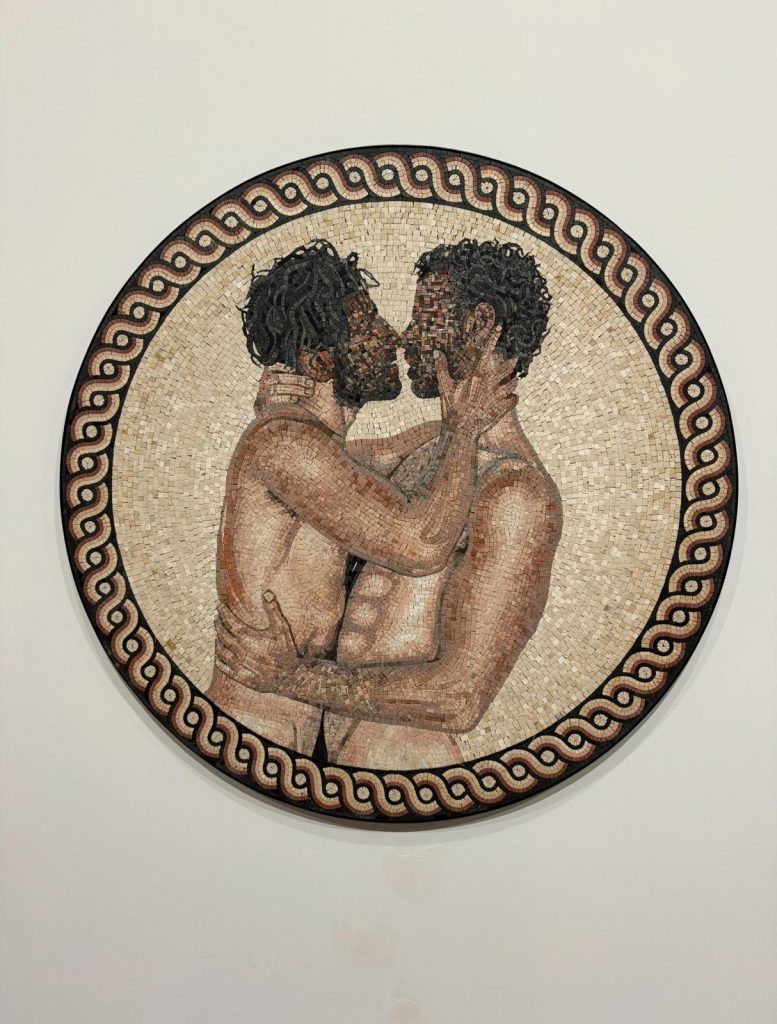
Omar Mismar, Two unidentified lovers in a mirror (2023), mosaic.
The Venice Biennale with its multiple pavilions, exhibitions, on and off site shows is an exhilarating experience that recharges one’s batteries and gives one hope in humanity even in these dark times. The indescribable beauty of Venice on top of it makes it more than worthwhile to brave all obstacles, rainstorms and logistical complications.
Artnet will have and will continue to report on the multiple aspects of this 60th edition of the Venice Biennale. I have selected below a few photographs of artworks that particularly struck me last week.
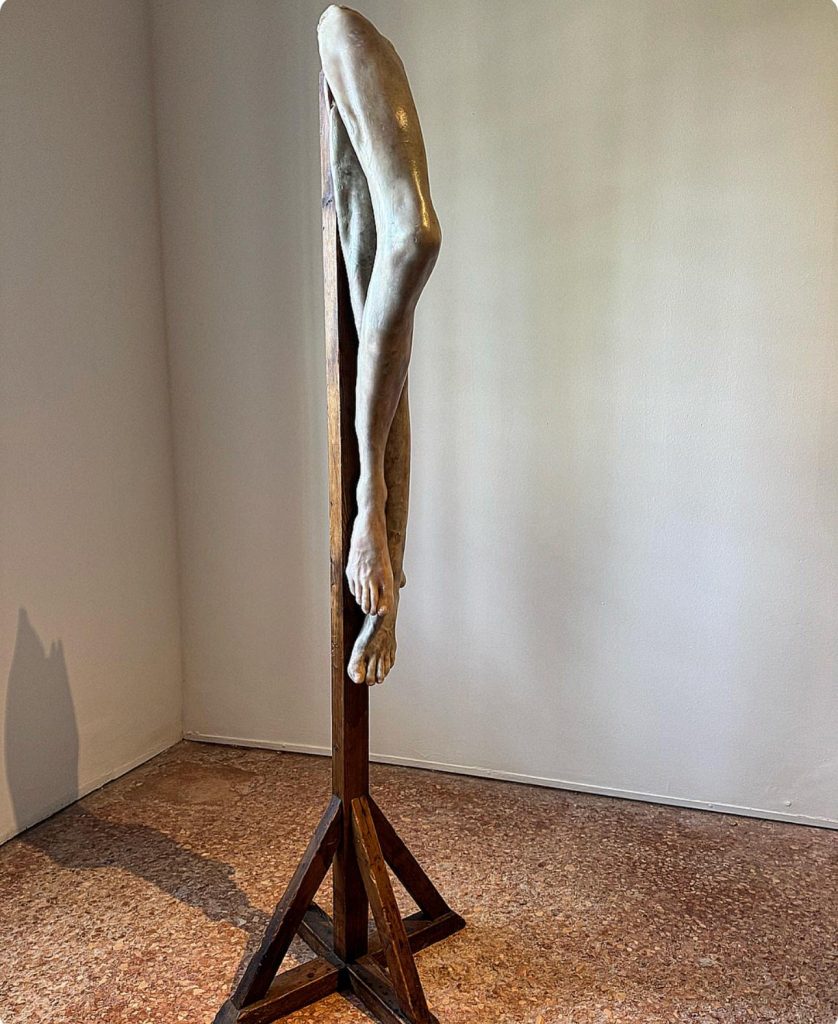
Photo: Simon de Pury.
“City of Refuge III” is a sensational exhibition of works by the Ghent-born artist Berlinde de Bruyckere at the Abbazia of San Giorgio Maggiore. Of the many exhibitions currently in Venice it is the one that moved me most deeply. De Bruyckere’s work combines an infinite sensitivity, a deep knowledge of art history with an outstanding and highly sophisticated technique. It alone is well worth the trip to Venice.
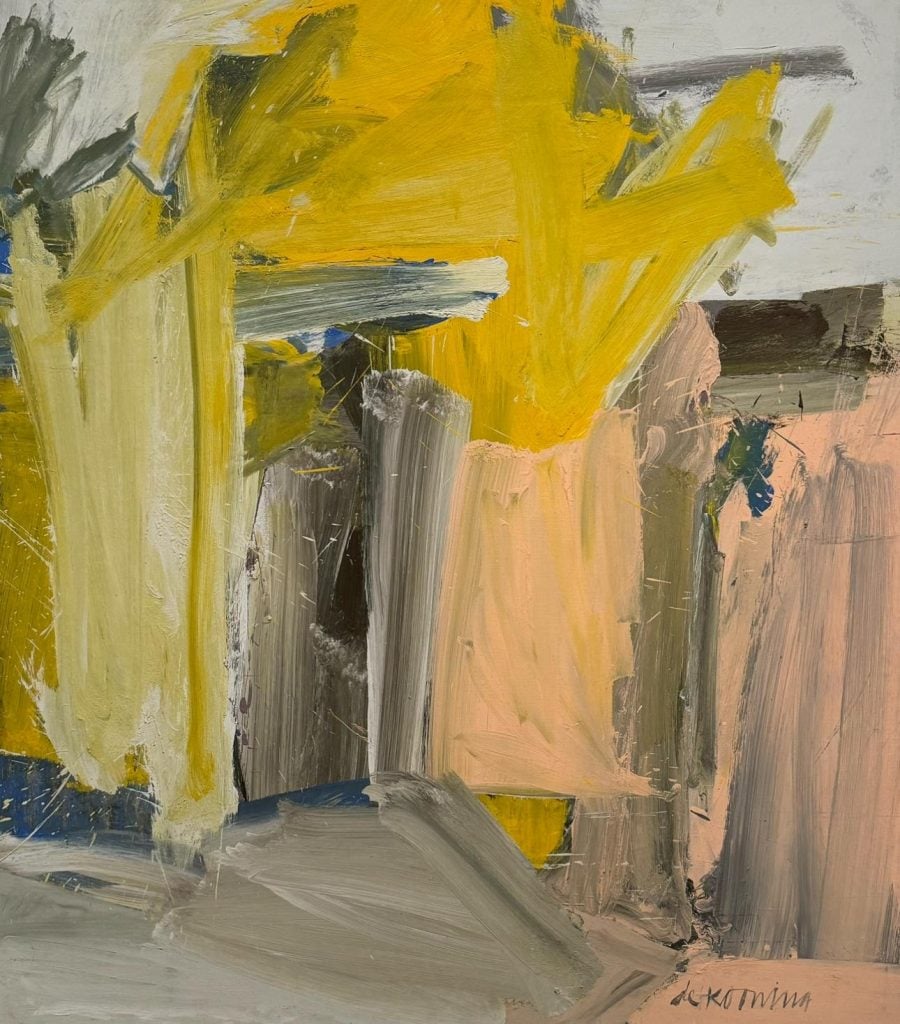
Photo: Simon de Pury.
“Willem de Kooning e l’Italia” is a brilliantly curated exhibition by Garry Garrels and Mario Codognato with a selection of outstanding works done under the impact of the artist’s sojourns in Italy in 1959 and 1969. It is the biggest retrospective ever devoted to de Kooning in Italy.
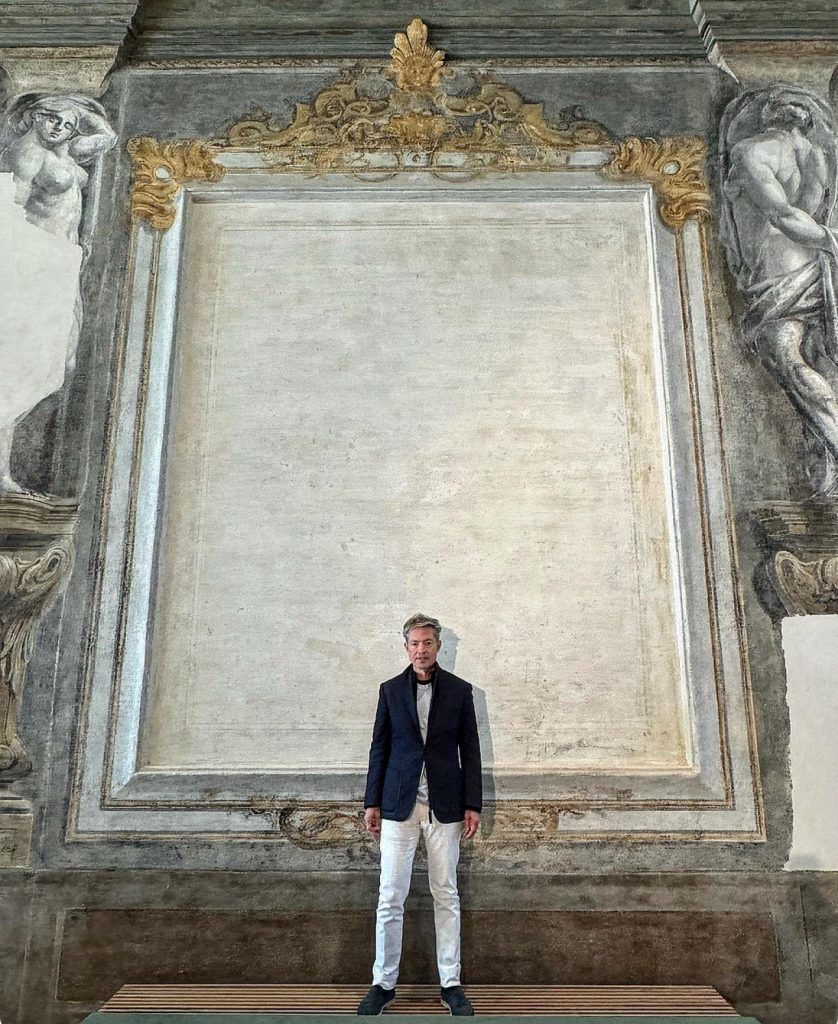
Nicolas Berggruen. Photo: Simon de Pury.
Nicolas Berggruen inside one of his recently acquired Venetian palaces, the spectacular Palazzo Diedo. It has the exceptional feature of two Piani Nobili and provided the artists chosen by Berggruen a dream setting for their site specific works. A major addition to the many cultural attractions of Venice. Photo: Simon de Pury.
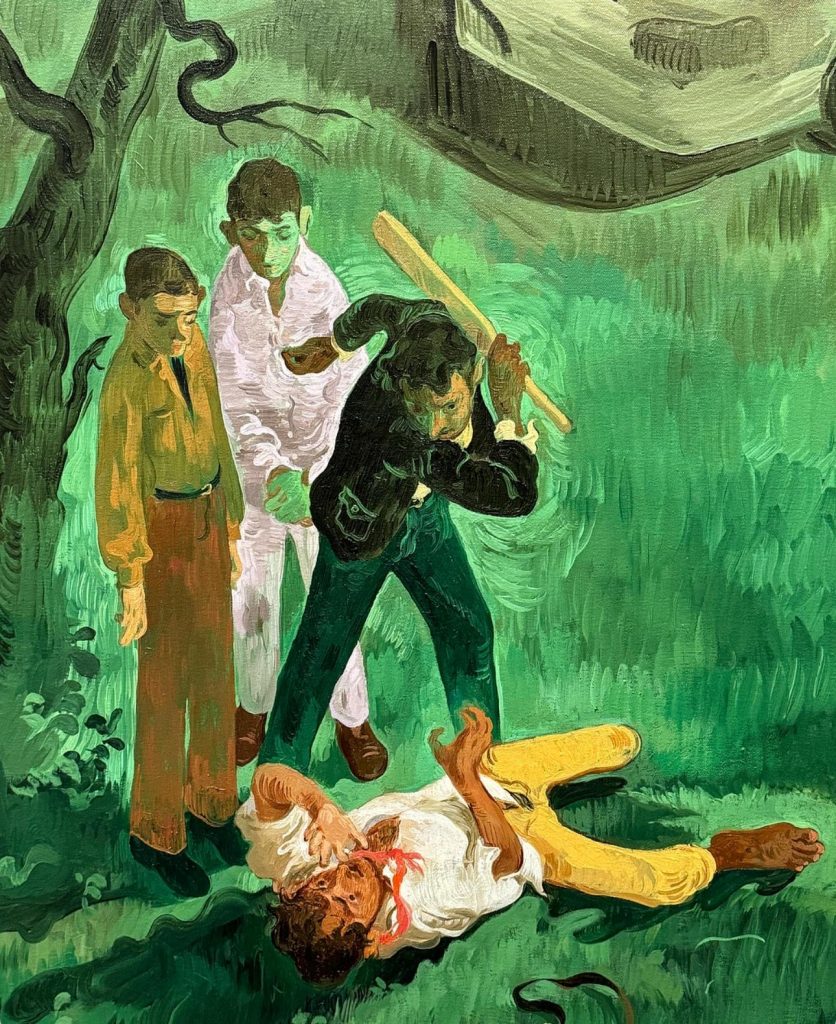
Photo: Simon de Pury.
There is a selection of strong paintings at the Arsenale by the Pakistani artist Salman Toor whose work has been embraced by the market over the last couple of years. It makes you understand the red hot demand for his work.
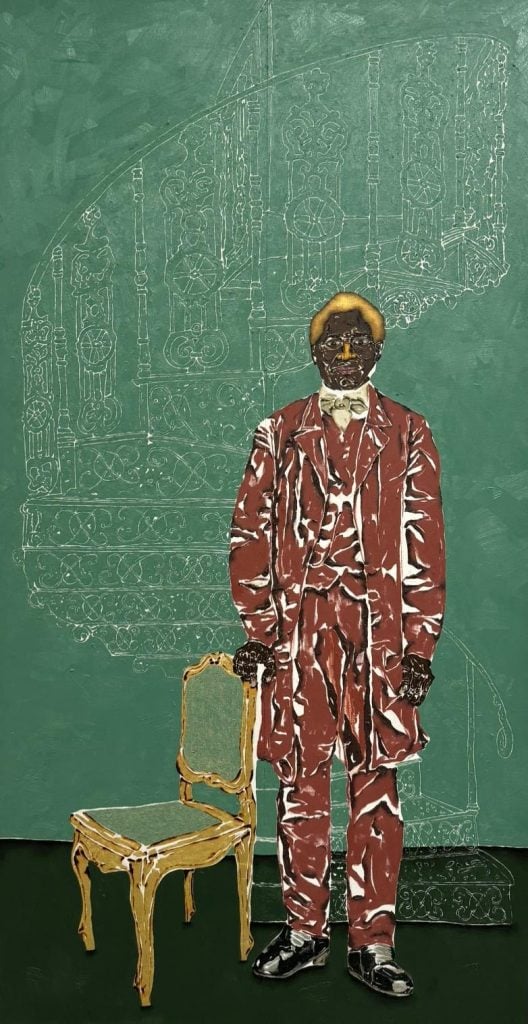
Photo: Simon de Pury.
A detail from one of the five strong paintings done by the Brazilian-born artist Dalton Paula.
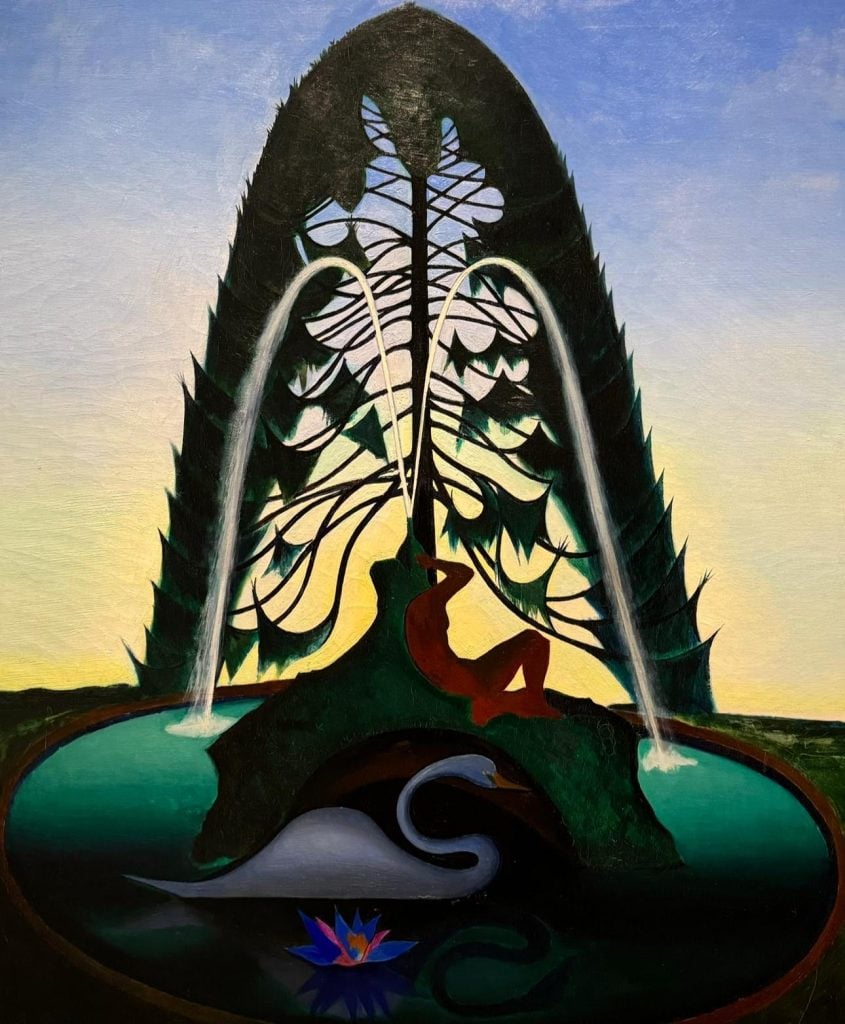
Photo: Simon de Pury.
A beautiful 1929 painting entitled Fountain by the American artist Joseph Stella.
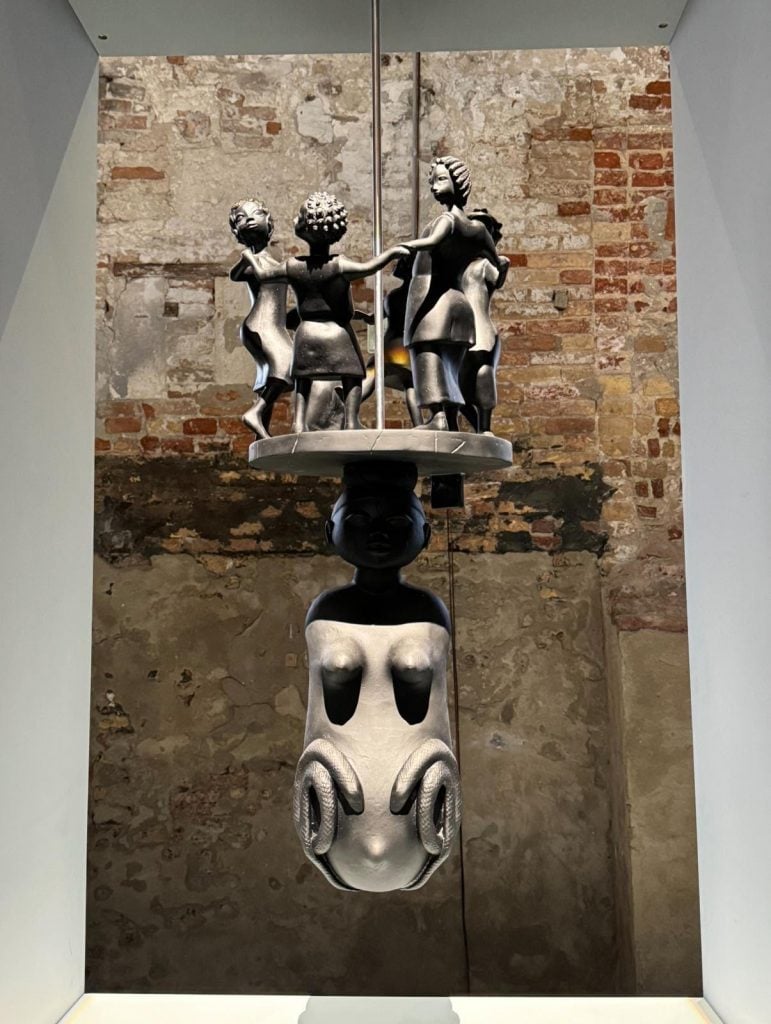
A work in the Benin Pavilion at the Arsenale.
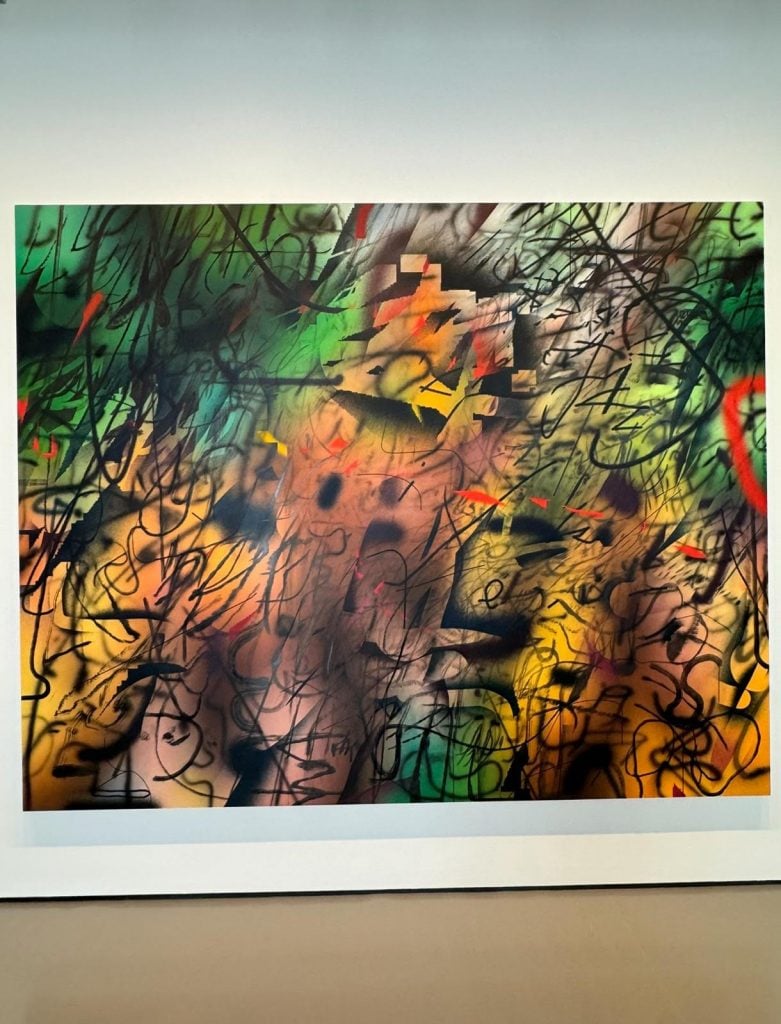
Photo: Simon de Pury.
The gorgeous exhibition “Ensemble” of works by the great Ethiopian American artist Julie Mehretu and some of her friends hosted by the Pinault Collection at the Palazzo Grassi is one of the absolute musts in Venice this summer. Paintings from all periods of the artist so far show that she is not only one of the greatest masters of abstraction but one of the best artists living today.
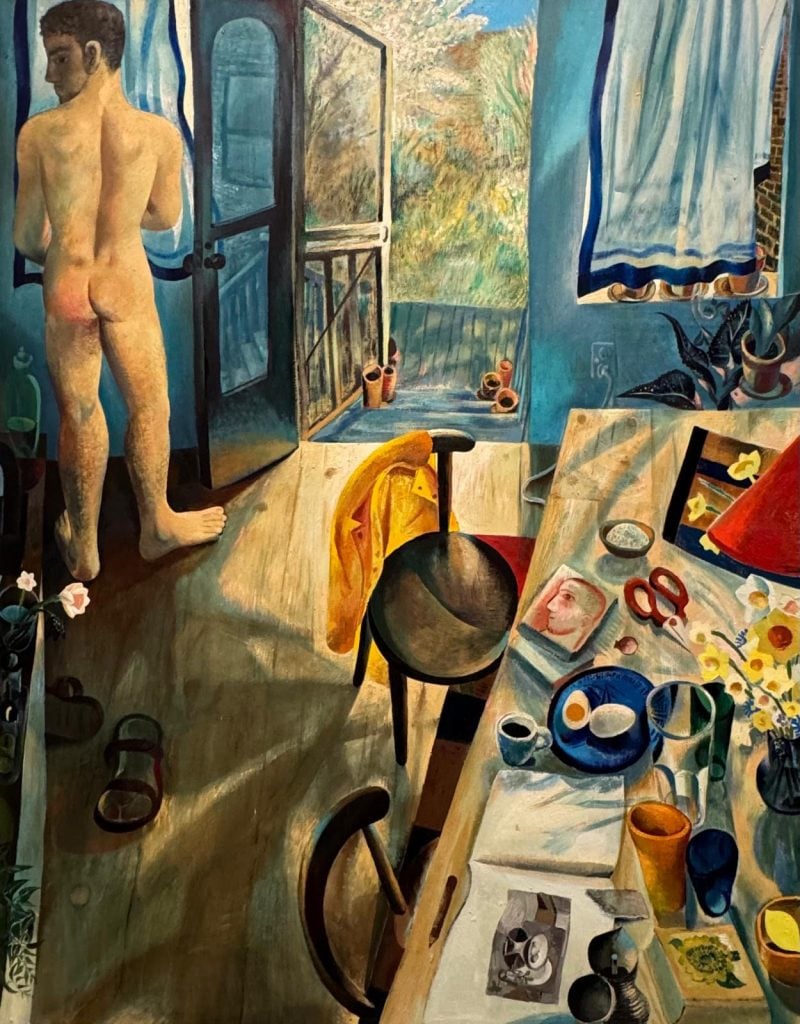
Louis Fratino, April (after Christopher Wood) (2024).
Louis Fratino, April (after Christopher Wood) (2024). The group of works on display at the Giardini by the current market darling makes you understand the why his work is in such high demand.
Simon de Pury is the founder of de PURY, former chairman and chief auctioneer of Phillips de Pury & Company, former Europe chairman and chief auctioneer of Sotheby’s, and former curator of the Thyssen-Bornemisza Collection. He is an auctioneer, curator, private dealer, art advisor, photographer, and DJ. Instagram: @simondepury